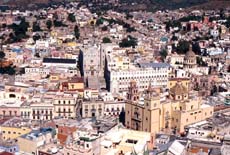index
Density within flows
The city in its several traditional forms has shown for thousands of years how economic and cultural creativity increase when people are put in spatial proximity. But today there are new kinds of spatial and non-spatial relationships and closenesses; these let us ask whether it is possible "to accommodate the social and political advantages of spatial agglomeration within a far-reaching decentralization of urban settlement patterns." (Grabow 1977, 123) When we think about cities in comparison to sprawl, we should think about the possibility of replacing the spatially dense city by a networked communication- and transport-dense spread. This idea has been proposed in many versions, such envisioning networked teleworkers living in rural areas, or linked small towns and neighborhoods, or a scattered sprawl of industrial or research regions.Dense and spatially tight urbanity has now become only one form of life within larger flows and connections that the city no longer dominates. The city is no longer the center or the point of origin, or the only goal. It used to be that only in cities could one connect with the larger flows of ideas and resources. The spatial denseness brought wider horizons. Now resources and culture can connect and come together in many places, often in temporary relations that widen horizons even more, and connect more than just major centers. These new arrangements can be less spatially dense because flows of information and resources can be brought to bear on many widely spread locations and from many directions as needed.
